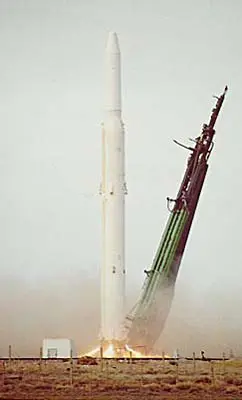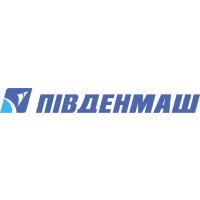US-A n°10
Launch Failure
Liftoff Time (GMT)
09:10:00
Wednesday April 25, 1973
Mission Details
Launch Notes
The launcher exploded in flight, a plane that flew over the crash area found above-normal radiation levels from the small nuclear reactor on board the satellite.
US-A n°10
US-A satellites (Russian: Управляемый Спутник Активный) is a family of Soviet military satellites launched between 1970 and 1988 that feature active radar. They were used to locate the largest NATO ships to guide transhorizon missiles launched from Soviet ships, aircraft or submarines in wartime. To provide the large amount of energy needed to operate the radar, the designers chose to install a small nuclear reactor. At the end of its operational life, the reactor was to be separated and placed on a higher orbit to delay the date of re-entry into the atmosphere by several hundred years. But several of these satellites failed and their reactors made a premature atmospheric re-entry. US-A satellites are placed in circular orbits at an altitude of about 255 km with an inclination of 65°. Once their mission is complete, an engine propels them into a higher orbit. Once this orbit is reached, it takes five or six centuries before friction causes them to decay. This time is sufficient to neutralize the nuclear material on board. US-As are equipped with an automated ejection system that ensures the placement of the nuclear reactor in high orbit, even if the satellite's systems malfunction. A US-A satellite has a mass of 3800kg, a diameter of 1.3m and a length of 10m. The radar operates at 8.2 GHz. Topaz is the first orbital nuclear reactor to have been developed and launched. It was tested on US-A satellite prototypes from 1971. It has equipped all operational US-A satellites since then. The fuel it uses is uranium 235. It is equipped with a lithium hydride radiation shield. During flight tests, Topaz-1 provided 5kW for 344 days. During ground tests, Topaz-2 provided 6kW during a year and a half. In 1991, the United States bought two copies of Topaz-2 from its manufacturer, TsKB Mach.
Low Earth Orbit
1 Payload
3,800 kilograms
Launch Site
Stats
Tsyklon-2
14th
Mission
1st
Mission of 1973
Yuzhmash
739th
Mission
20th
Mission of 1973
1973
24th
Orbital launch attempt

